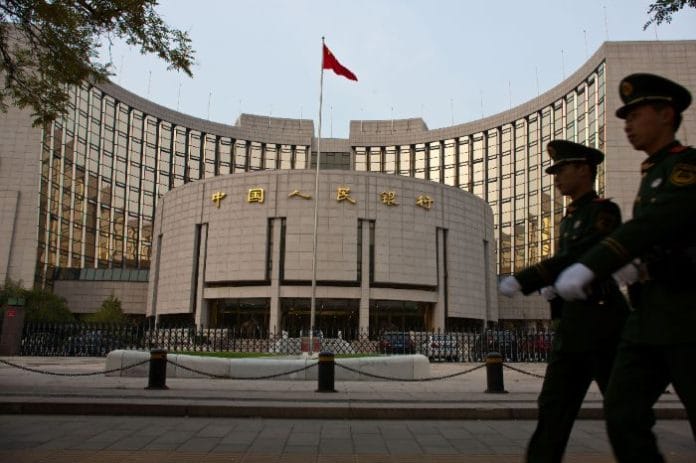Moody’s Investors Service cut its outlook for Chinese sovereign bonds to negative, underscoring deepening global concerns about the level of debt in the world’s second-largest economy.
Moody’s lowered its outlook to negative from stable while retaining a long-term rating of A1 on the nation’s sovereign bonds, according to a statement. China’s usage of fiscal stimulus to support local governments and its spiralling property downturn is posing risks to the nation’s economy, the grader said.
The change in thinking comes as China’s deepening property rout triggers a shift towards fiscal stimulus, with the country ramping up its borrowing as a main measure to bolster its economy. That has raised concerns about the nation’s debt levels with Beijing on track for record bond issuance this year.
“Whether this latest news will have any further impact on this is debatable, but at the very least, it won’t help,” said Rob Carnell, regional head of research for Asia-Pacific at ING Groep NV. “The market’s negative reaction in terms of the yuan and stocks suggests that it wasn’t fully anticipated.”
China’s economy has struggled for traction this year as a rebound from restrictive Covid-zero policies proved to be weaker than expected and the property crisis deepened. Data last week showed both manufacturing and services activities shrank in November, bolstering a belief that more government action is needed to support a faltering recovery.
In October, Chinese President Xi Jinping signalled that a sharp slowdown in growth and lingering deflationary risks won’t be tolerated, as the government increased its headline deficit to the largest in three decades. At 3.8% for 2023, the deficit-to-GDP ratio is well above a long-adhered to 3% limit.
The revision allowed the central government to sell one trillion yuan (RM654.97 billion) of additional sovereign bonds within the year to support disaster relief and construction. Local governments were also selling special re-financing bonds to swap some off-balance sheet debt carrying higher costs.
“Considering the policy challenge posed by local government debt, the central government is focused on preventing financial instability” and has insights in regional authorities’ debt conditions, Moody’s said. “Still, maintaining financial market stability while avoiding moral hazard and containing fiscal costs of support is very challenging.”
The yuan held losses of about 0.1% in both onshore and overseas trading, while the yield on China’s 10-year government bonds was little changed at 2.68%. The MSCI China Index slid more than 2%, on course for its lowest close since November 2022. The gauge held on to losses after Moody’s move.
Moody’s last cut its credit rating on China in 2017, to A1 from Aa3, on the likelihood of a material rise in economy-wide debt and the impact that would have on state finances. That was its first China debt downgrade since 1989.
Earlier this year, Fitch Ratings Ltd said in an interview with Bloomberg television that it may reconsider China’s A+ sovereign credit score. The firm recently affirmed such a rating with a stable outlook.
S&P Global Ratings has kept China’s ratings at A+ with stable outlook since its last downgrading in 2017 that followed a similar move by Moody’s.
“The rating downgrade risk is unlikely to reverse the debt issuances plan, which could help ease concern over property sector and China sluggish growth,” said Ken Cheung, chief Asian FX strategist at Mizuho Securities. “The impact of rating outlook cut on bond flow should prove limited while the China-US rate spread is still mains a key driver.” – Bloomberg









